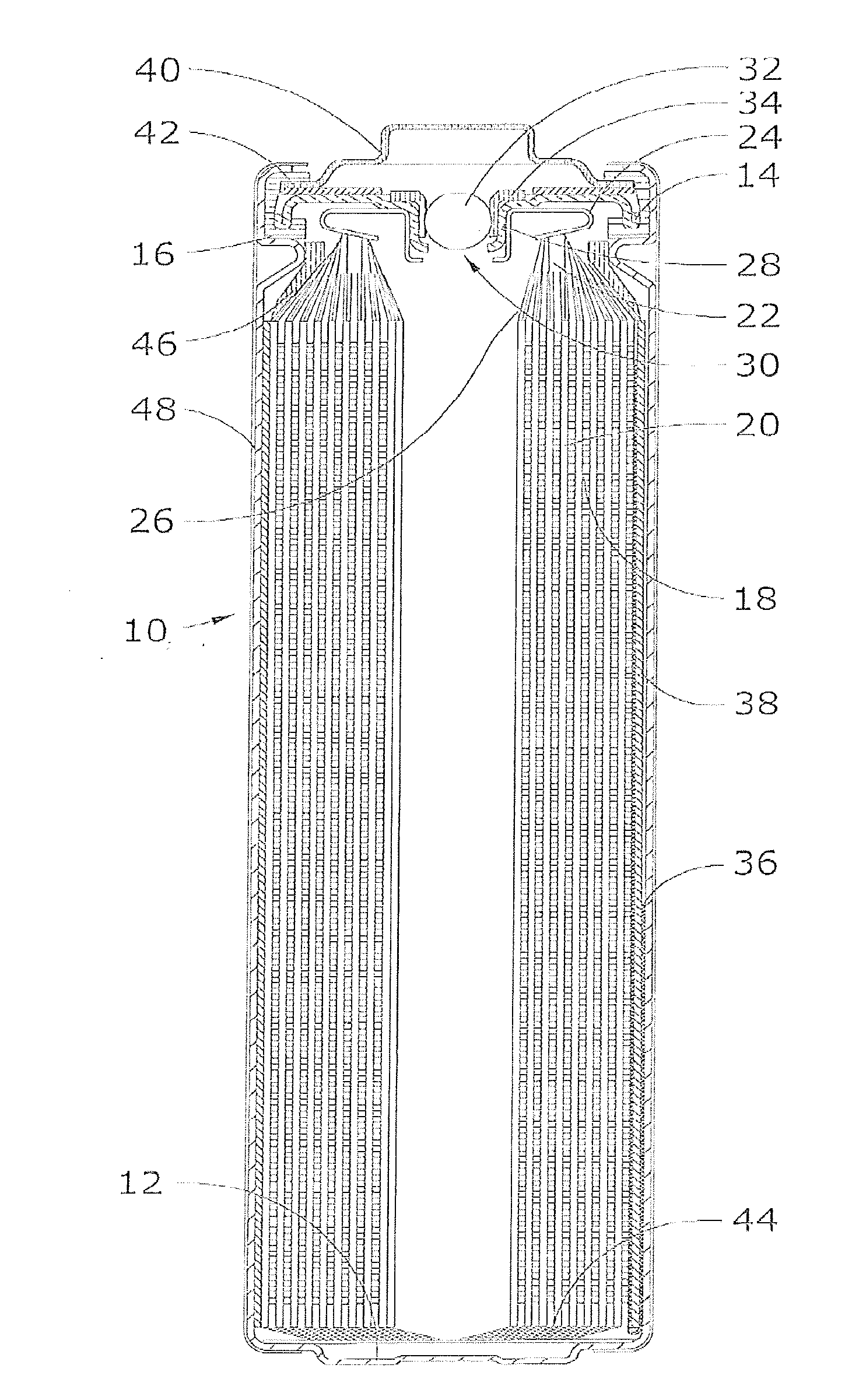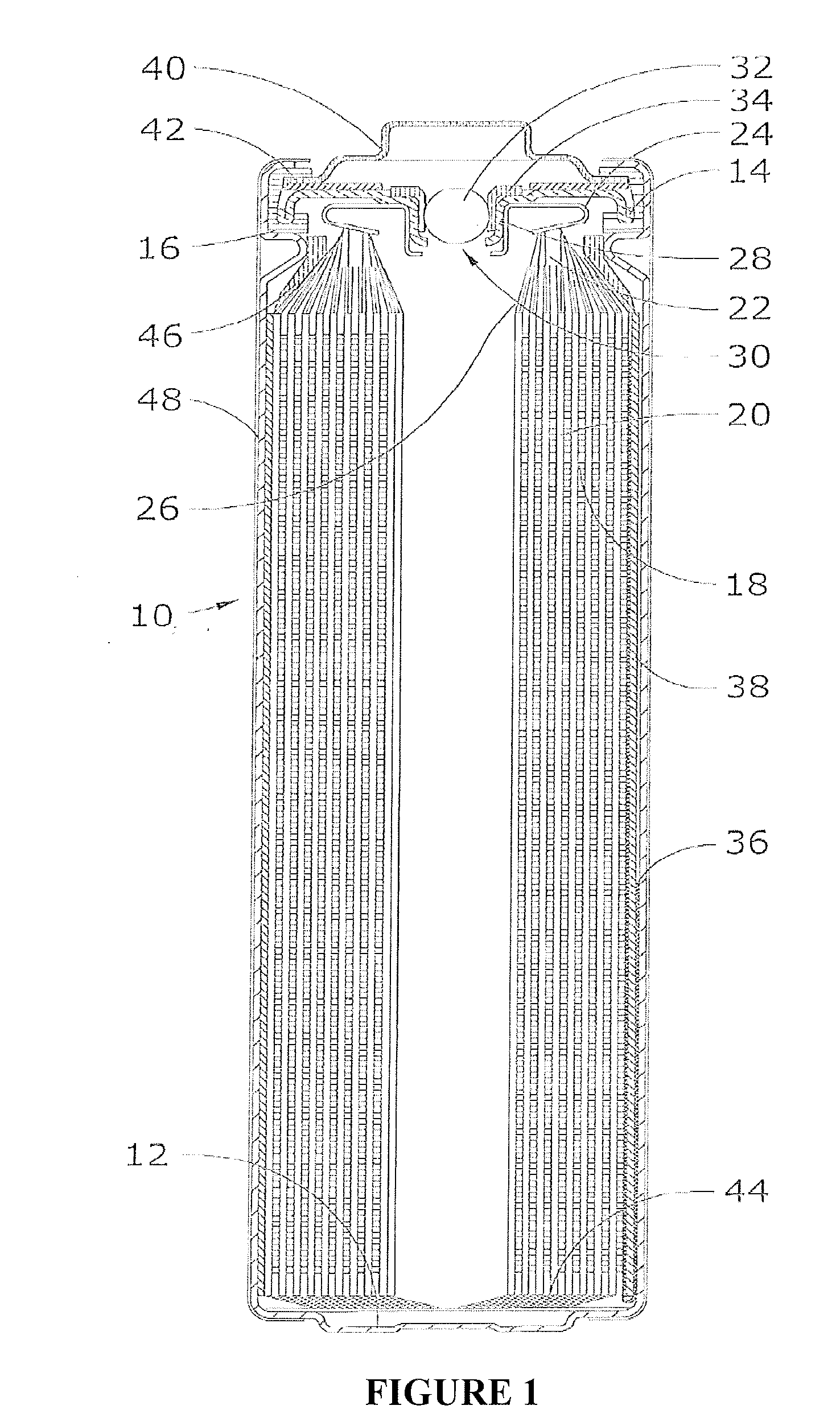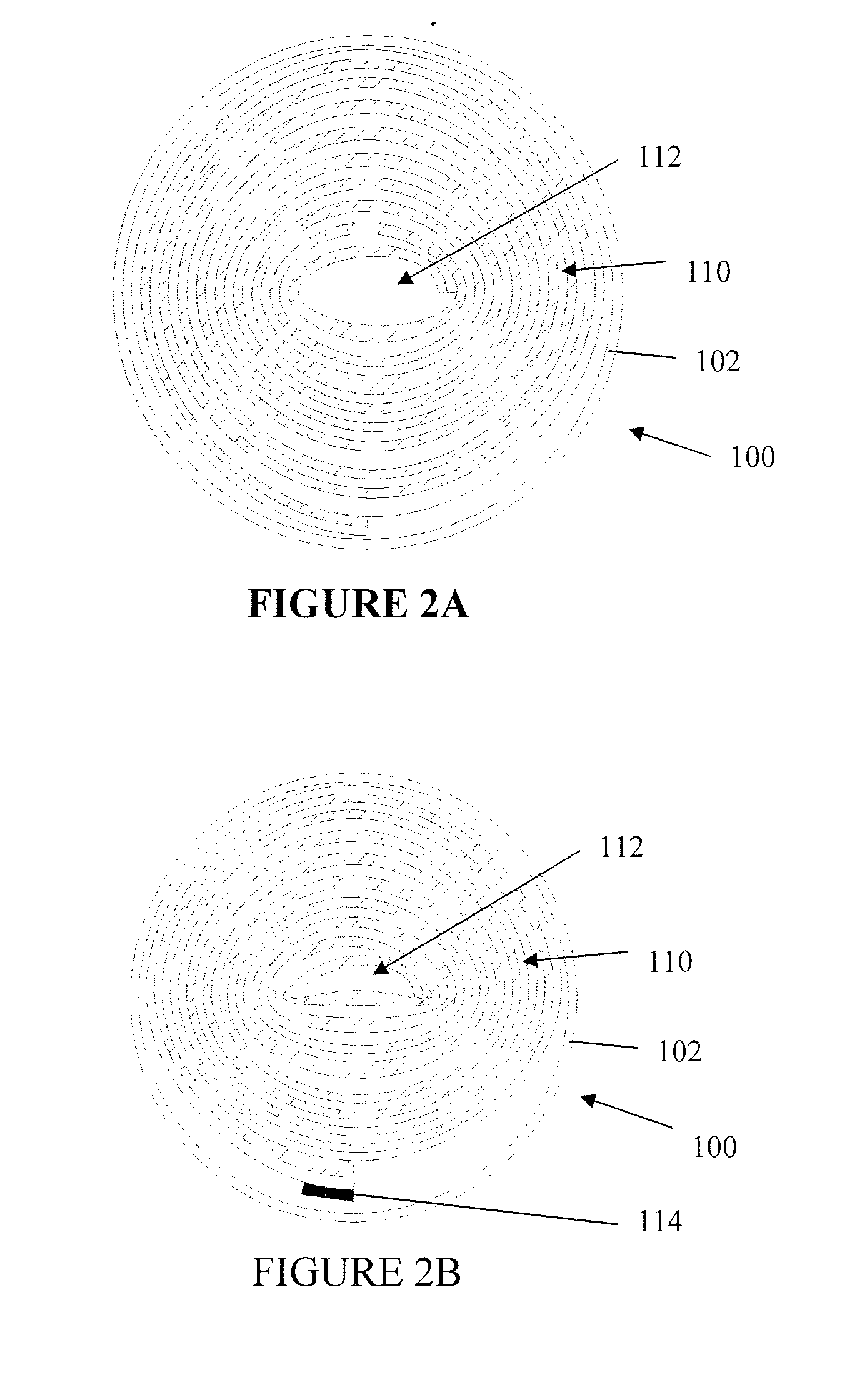Lithium-Iron Disulfide Cell Design with Core Reinforcement
a technology of lithium iron disulfide and core reinforcement, which is applied in the direction of secondary cell details, wound/folded electrode electrodes, non-aqueous electrolyte cells, etc., can solve the problem of battery utility, battery will cease to deliver capacity, and the battery will be hard short and/or physically disconnected or severing, etc. problem, to achieve the effect of prolonging the service life and prolonging the capacity
- Summary
- Abstract
- Description
- Claims
- Application Information
AI Technical Summary
Benefits of technology
Problems solved by technology
Method used
Image
Examples
Embodiment Construction
[0067]Unless otherwise specified, as used herein the terms listed below are defined and used throughout this disclosure as follows:[0068]ambient temperature or room temperature—between about 20° C. and about 25° C.; unless otherwise stated, all examples, data and other performance and manufacturing information were conducted at ambient temperature;[0069]anode—the negative electrode; more specifically, in a lithium-iron disulfide cell, it consists essentially of lithium and / or lithium-based alloy (i.e., an alloy containing at least 90% lithium by weight) as the sole electrochemically active material, without the use of a distinct, full-electrode length current collector;[0070]capacity—the capacity delivered by a single electrode or an entire cell during discharge at a specified set of conditions (e.g., drain rate, temperature, etc.); typically expressed in milliamp-hours (mAh) or milliwatt-hours (mWh) or by the number of images taken under a digital still camera test;[0071]cathode—th...
PUM
| Property | Measurement | Unit |
|---|---|---|
| voltages | aaaaa | aaaaa |
| temperatures | aaaaa | aaaaa |
| temperatures | aaaaa | aaaaa |
Abstract
Description
Claims
Application Information
 Login to View More
Login to View More - R&D
- Intellectual Property
- Life Sciences
- Materials
- Tech Scout
- Unparalleled Data Quality
- Higher Quality Content
- 60% Fewer Hallucinations
Browse by: Latest US Patents, China's latest patents, Technical Efficacy Thesaurus, Application Domain, Technology Topic, Popular Technical Reports.
© 2025 PatSnap. All rights reserved.Legal|Privacy policy|Modern Slavery Act Transparency Statement|Sitemap|About US| Contact US: help@patsnap.com



